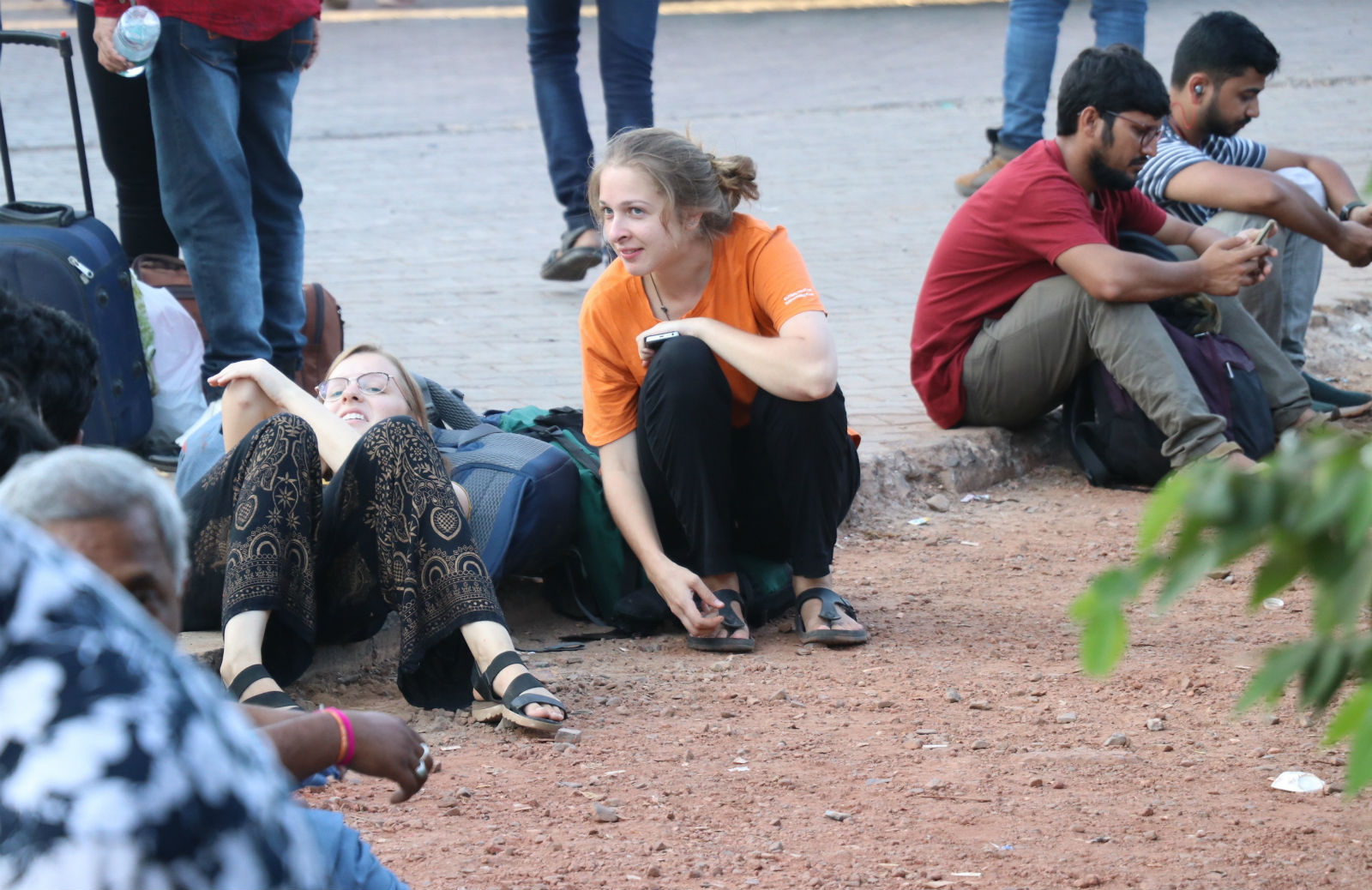Nestled on the west coast of India, Goa is known for its beautiful beaches, vibrant culture, and rich history. While most visitors to Goa come to enjoy its lively nightlife and beautiful coastline, the state also boasts a rich archaeological heritage, including several prehistoric and ancient caves.
Goa’s caves have been a subject of fascination for archaeologists and history enthusiasts for decades. These caves offer a glimpse into the region’s rich past, from the earliest traces of human habitation to the rise of Hinduism and Buddhism in the region.
Each cave tells a unique story, reflecting the diverse cultural influences that have shaped Goa’s history. From the stunning prehistoric rock art at the Usgalimal Caves to the beautiful rock-cut temples at the Elephanta and Shantadurga Caves, each of Goa’s caves is a testament to the ingenuity, creativity, and spiritual aspirations of its builders. These caves were not just places of worship but also served as homes, meditation chambers, and community spaces.
In this guide, we will take a closer look at some of the most important caves in Goa, from the earliest prehistoric sites to the spiritual caves of Hinduism and Buddhism. Whether you’re a history buff, a spiritual seeker, or simply looking for a unique adventure, these caves offer something for everyone.
So pack your bags, put on your hiking shoes, and get ready to explore the fascinating world of Goa’s caves. Whether you’re interested in ancient history, architecture, or spirituality, these caves are sure to leave you awestruck and inspired.
Arvalem or Harvalem Caves
The Arvalem Caves, also known as the Pandava Caves, are a group of five rock-cut caves dating back to the 6th or 7th century. Located near the village of Sanquelim, these caves are believed to have been used by Buddhist monks as prayer halls and meditation chambers.
The most impressive cave here is Cave 3, which has a beautiful Chaitya arch and a large stupa. The entrance to the cave is adorned with intricate carvings, and the interior has several small cells where the monks would have lived and meditated. The walls of the cave have carvings of the Buddha, Bodhisattvas, and other Buddhist deities.
The Arvalem Caves are a significant example of early rock-cut architecture in India and offer a glimpse into the Buddhist influence in the region during that period. The serene atmosphere and intricate carvings make these caves a must-visit for history buffs and spiritual seekers alike.
Rivona Cave
The Rivona Cave is located in the village of Rivona and is believed to be around 6,000 years old. The cave has several petroglyphs or rock engravings depicting human figures, animals, and geometric designs. These engravings are believed to be from the Neolithic period and offer a glimpse into the lives of the people who inhabited this region in prehistoric times.
The cave is situated in a dense forest and requires a short hike to reach. Once inside, visitors can marvel at the ancient engravings that adorn the walls of the cave. The engravings depict hunting scenes, farming activities, and everyday life during that period.
The Rivona Cave is an excellent example of prehistoric rock art and offers a fascinating insight into the lives of the early inhabitants of the region. A visit to this cave is a must-do for anyone interested in anthropology and early human history.
Lamgau Caves
The Lamgau Caves, also known as the Lamgao Caves, are a group of four rock-cut caves located near Bicholim. These caves are believed to have been built during the 6th century and were used by Buddhist monks for meditation and prayer.
The most impressive cave here is Cave 4, which has a beautifully carved statue of the Buddha in the teaching pose. The cave also has several small cells where the monks would have lived and meditated. The walls of the cave have carvings of the Buddha and other Buddhist deities.
The Lamgau Caves are a testament to the Buddhist influence in the region during that period and are an excellent example of early rock-cut architecture in India. The serene atmosphere and beautiful carvings make these caves a must-visit for anyone interested in history and spirituality.
Khandepar Caves
The Khandepar Caves are a group of five rock-cut caves located near the village of Khandepar. These caves are believed to be around 1,000 years old and were used by Hindu ascetics for meditation and penance.
The most interesting cave here is Cave 2, which has a large lingam (a phallic symbol representing the Hindu god Shiva) and a beautifully carved Nandi bull. The cave also has several small cells where the ascetics would have lived and meditated. The walls of the cave have carvings of Hindu deities such as Shiva, Vishnu, and Brahma.
The Khandepar Caves are a fascinating example of early Hindu rock-cut architecture and offer a glimpse into the spiritual practices of the region during that period. The intricate carvings and peaceful atmosphere make these caves a must-visit for anyone interested in history and spirituality.
Shantadurga Caves
The Shantadurga Caves are a group of four rock-cut caves located in the village of Kavalem. These caves are believed to have been built during the 11th century and were used by Hindu ascetics for meditation and penance.
The most impressive cave here is Cave 3, which has a large lingam and a beautifully carved statue of the goddess Shantadurga. The cave also has several small cells where the ascetics would have lived and meditated. The walls of the cave have carvings of Hindu deities such as Shiva, Vishnu, and Brahma.
The Shantadurga Caves are a testament to the Hindu influence in the region during that period and are an excellent example of early rock-cut architecture in India. The serene atmosphere and beautiful carvings make these caves a must-visit for anyone interested in history and spirituality.
Tambdi Surla Caves
The Tambdi Surla Caves are a group of rock-cut caves located near the Tambdi Surla temple. These caves are believed to have been built during the 12th century and are considered to be some of the oldest surviving examples of Jain rock-cut architecture in India.
The most impressive cave here is Cave 1, which has a beautifully carved statue of the Jain Tirthankara, Mahavira. The cave also has several small cells where the monks would have lived and meditated. The walls of the cave have carvings of other Jain Tirthankaras and deities.
The Tambdi Surla Caves are a significant example of Jain rock-cut architecture and offer a glimpse into the Jain influence in the region during that period. The serene atmosphere and intricate carvings make these caves a must-visit for anyone interested in history and spirituality.
Mangueshi Caves
The Mangueshi Caves are a group of rock-cut caves located near the Mangueshi temple. These caves are believed to have been built during the 6th century and were used by Buddhist monks for meditation and prayer.
The most impressive cave here is Cave 2, which has a beautifully carved statue of the Buddha in the teaching pose. The cave also has several small cells where the monks would have lived and meditated. The walls of the cave have carvings of the Buddha and other Buddhist deities.
The Mangueshi Caves are a testament to the Buddhist influence in the region during that period and are an excellent example of early rock-cut architecture in India. The serene atmosphere and beautiful carvings make these caves a must-visit for anyone interested in history and spirituality.
Saptakoteshwar Caves
The Saptakoteshwar Cave is a small rock-cut cave located near the village of Narve in Goa. This cave is dedicated to Lord Shiva and features a linga, which is a symbol of Lord Shiva. The cave is believed to have been built during the 12th century AD and is still used for worship today.
The Saptakoteshwar Cave is accessible through a flight of stairs that leads down to the entrance. The cave is relatively small, but it is beautifully adorned with intricate carvings and sculptures of Lord Shiva and other Hindu deities. The linga in the center of the cave is the main focus of worship and is believed to be one of the most powerful lingas in Goa.
The Saptakoteshwar Cave is an important pilgrimage site for devotees of Lord Shiva. The cave is particularly popular during the festival of Mahashivaratri, which celebrates Lord Shiva’s wedding anniversary. During the festival, thousands of devotees visit the cave to offer prayers and perform special rituals.
Apart from its religious significance, the Saptakoteshwar Cave also offers beautiful views of the surrounding landscape. The cave is situated on a hilltop and offers panoramic views of the lush greenery and nearby villages. Overall, the Saptakoteshwar Cave is a must-visit destination for anyone interested in history, spirituality, and natural beauty. The cave’s rich cultural and religious heritage, combined with its serene surroundings, make it a unique and memorable experience for visitors.
In conclusion, a journey through Goa’s caves is a journey through time, culture, and spirituality. The state’s caves are a testament to the ingenuity and creativity of its people, as well as the diverse cultural influences that have shaped its history. From the prehistoric rock art at the Usgalimal Caves to the spiritual shrines at the Mangueshi and Tambdi Surla Caves, each cave offers a unique window into the past. They reveal a rich tapestry of human history, from the earliest evidence of human habitation to the rise of Buddhism and Hinduism.
Exploring Goa’s caves is not only a journey through the past, but also an opportunity to reflect on the present and the future. It is a reminder of the importance of preserving our cultural heritage and learning from the wisdom of our ancestors.
As you explore these caves, you’ll be struck by the incredible beauty and spiritual energy that permeates these spaces. The intricate carvings, serene atmosphere, and breathtaking views are sure to leave a lasting impression.
So, whether you’re a history enthusiast, a spiritual seeker, or simply looking for a unique adventure, a visit to Goa’s caves is a must-do. Take the time to explore these ancient and sacred spaces, and you’ll discover a deeper appreciation for the richness and diversity of human history.






































